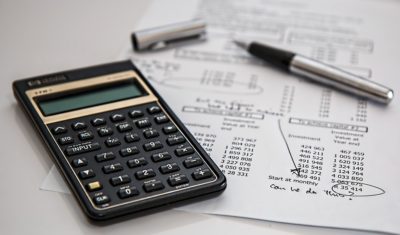Anatomy of a Chapter 13 Bankruptcy
You have a steady job; so does your significant other. You don’t party like a rock star or drive a Lamborghini. But maybe you had to live off your credit cards during a temporary layoff last year, or you’ve recently had uninsured medical expenses. Whatever the reasons, these days your best efforts to keep up with your bills always seem to fall short. Collection calls are becoming a daily occurrence.
So, like thousands of other working individuals do every year, you’re considering bankruptcy. It’s not a step to be taken lightly, and you’ll want to learn something about the pros and cons before you decide whether to file. In this series, we’ll first discuss some bankruptcy basics and try to debunk some common misconceptions. We’ll then describe what you can expect to happen if you file a Chapter 13 bankruptcy petition, the most common type of consumer bankruptcy.
Just What Is Bankruptcy?
Bankruptcy is a process supervised by a special federal court in which a person’s debts are either reorganized or eliminated. The process is governed by the federal Bankruptcy Code, which provides for several types of bankruptcy, each with its own “Chapter”. The vast majority of personal bankruptcies are filed under either Chapter 7 or Chapter 13.
Chapter 7 Versus Chapter 13
A Chapter 7 case is a “liquidation”. A court official called a trustee will take possession of whatever assets you have (most personal property is excluded), and sell (or “liquidate”) them and distribute the proceeds to your creditors. “Secured” creditors, such as the holder of the mortgage on your home or the lien on your vehicle title may be permitted to proceed with foreclosure or repossession.
Chapter 13 bankruptcies are sometimes called “wage earner” cases because they are available only to to debtors with regular income (though it needn’t be from a job). In a Chapter 13 case, you don’t turn over assets to the trustee to liquidate. Instead, you must make regular payments over time (typically every month for 3-5 years) to the trustee under a court-approved payment plan. The payment amount will vary from case to case, and the trustee divides up each of your payments among your creditors.
Common Bankruptcy Misconceptions
“ONLY DEADBEATS FILE BANKRUPTCY”While there will always be those who abuse the system, the vast majority of the more than 1 million people who file for bankruptcy annually do so only as a last resort after suffering financial setbacks from events such as job loss, illness or divorce.
“I CAN CHOOSE BETWEEN FILING UNDER A CHAPTER 7 OR A CHAPTER 13”Not so, for most debtors. In 2005, banks and other creditors convinced Congress that too many people with the ability to repay some of their debts (and who should therefore be filing under Chapter 13) were being allowed to get them all discharged in a Chapter 7 proceeding. Individuals wishing to proceed under Chapter 7 must now show that they lack the ability to repay any meaningful part of their debts. If the debtor cannot satisfy this so-called “means test”, he or she must proceed under Chapter 13.
“BACK TAXES CAN NEVER BE DISCHARGED IN A BANKRUPTCY”Never say “never”. Although you must meet certain criteria, some older tax obligations not incurred through fraud or evasion can be eliminated through bankruptcy.
“FILING BANKRUPTCY WILL RUIN MY CREDIT FOR YEARS TO COME”Many people are surprised at how soon after getting a bankruptcy discharge they begin to receive credit card offers (though they’re usually cards secured by a dedicated bank deposit). While it’s true that there’s no shortcut and that rebuilding your credit takes time and discipline, it is often possible to accomplish in less time than you might think.
Can I do this on my own? Read on about DIY Bankruptcy …


